FORMULA 1
Brutal ‘data never lie’ verdict in Tsunoda’s Red Bull snub – Michelle Foster
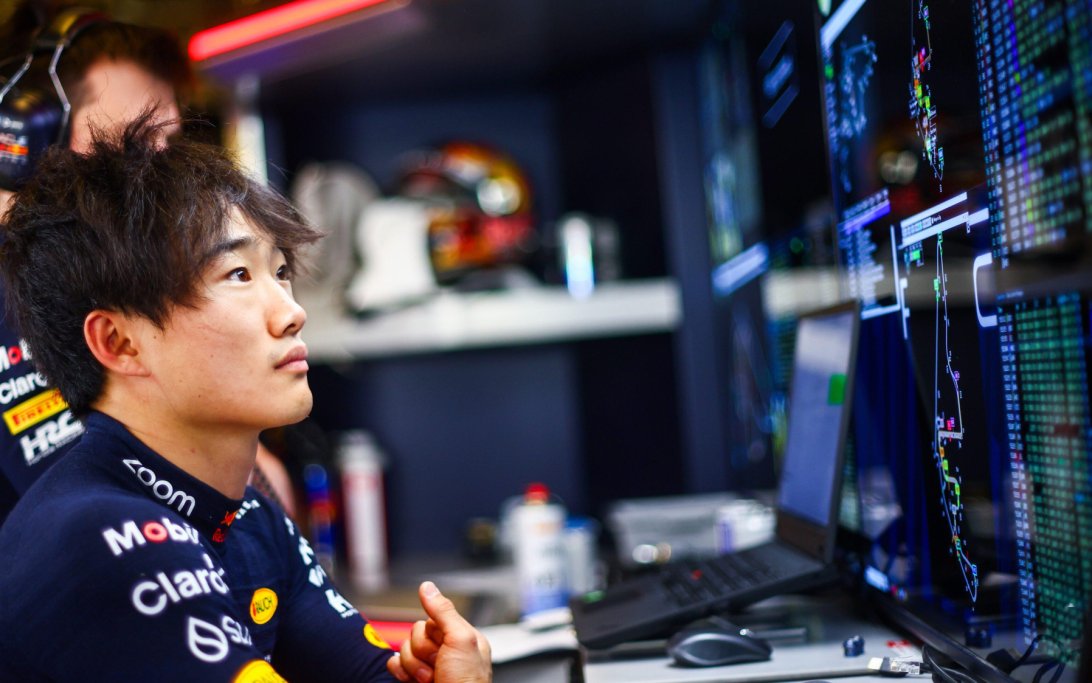
Robert Doornbos has expressed that he “understands” why Red Bull chose to promote Liam Lawson over Yuki Tsunoda, despite the snub. The former F1 driver explained that, ultimately, “the data never lies.”
Yuki Tsunoda was passed over for Liam Lawson
Red Bull appeared to have settled their F1 2025 driver lineup in May of last year when they handed Sergio Perez a two-year contract extension. However, this reassurance about his future didn’t spark the revival the team had hoped for. In fact, it had the opposite effect.
After a promising start to the season, Perez’s performance took a significant downturn. He accumulated 107 points in the first third of the championship, from Bahrain to Monaco, including four podium finishes.
But as the season progressed, his form dipped drastically, and he managed just 45 points in the final two-thirds, from Canada to Abu Dhabi.
This slump not only hurt Red Bull in the Constructors’ Championship, where they finished third, but it also led to Perez losing his seat with the team.
Red Bull and Perez announced their split at the end of the season, with the team confirming the appointment of Liam Lawson as his replacement the very next day. This decision came as a major disappointment for Yuki Tsunoda, Red Bull’s longest-serving junior driver.
Tsunoda, who joined Red Bull’s junior team in 2021, had outscored Lawson in their six races together last year but was still passed over for the promotion.
Christian Horner, Red Bull’s team principal, described the decision as a “tight call.” However, he emphasized that Lawson’s potential, having only competed in 11 Grands Prix, meant he would “only get better and stronger.”
More……
Robert Doornbos discussed the “analytics” behind Liam Lawson’s performance, noting that Lawson’s pace was “slightly better” compared to his competitors.
The former F1 driver, now a pundit, believes Red Bull made the right decision in choosing Lawson over Yuki Tsunoda. He said, “From the options they had, I think it is a sensible choice,” adding that although it was a tough decision for Tsunoda, “you obviously do not make Yuki happy with it.” Doornbos acknowledged Tsunoda’s long tenure with the team, as this was his fifth season, but reaffirmed that “the data never lies.”
Drawing on his experience as a former Red Bull driver, Doornbos argued that the data showed Lawson to be “less risky” and a “more consistent factor.” He added, “Considering his character, his lap times and all sorts of other things that are going on behind the scenes, and that we are not aware of,” he believed Lawson was a wise choice for the team.
However, Doornbos, like many others, is still curious about the reasoning behind Red Bull’s decision not to bring Carlos Sainz into the fold. Sainz, who made his F1 debut with Red Bull’s junior team in 2015 before moving on to Renault, McLaren, and then Ferrari, had hoped to return to Red Bull after losing his Ferrari seat to Lewis Hamilton. But Red Bull chose not to re-sign him.
There had been speculation that tensions between Sainz’s father, Carlos Sainz Snr., and Max Verstappen’s father, Jos Verstappen, during their sons’ time together at Toro Rosso may have influenced the decision. Doornbos remarked, “If you look back even further, then you think: why didn’t you just hire Carlos Sainz and put him in that car? He is a proven Grand Prix winner, who is actually at the peak of his career at the moment.” He concluded by saying, “But we will probably never know what really happened.”
FORMULA 1
Formula 1 Eyes Thailand as Stefano Domenicali Meets Prime Minister
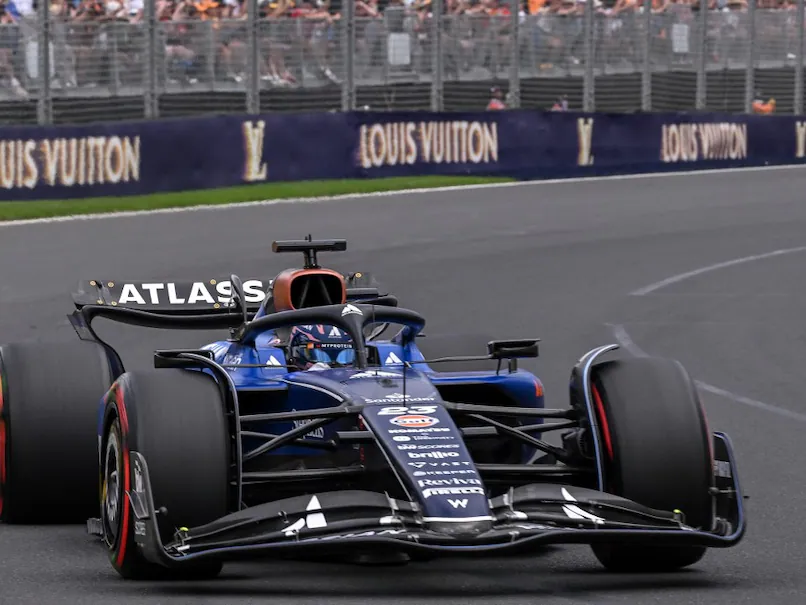
Formula 1’s big boss, Stefano Domenicali, sat down with Thailand’s Prime Minister Paetongtarn Shinawatra on Tuesday to chew over the idea of a Thai Grand Prix.
With the sport riding a wave of global hype, the ex-Ferrari chief fresh off a contract extension to 2029 wants to tap into new markets, and Thailand’s raising its hand.
The F1 calendar’s packed with 24 races, most locked in for years, but cracks are forming. Domenicali hinted last weekend that Thailand’s in the mix to snag a spot as slots free up down the road.
Post-meeting, Shinawatra didn’t waste time. She announced Thailand’s kicking off a feasibility study to weigh the ups and downs think costs and track options.
“It’s not just about the honour of hosting the race, but also a significant opportunity to develop urban infrastructure, welcome tourists from around the world to Thailand and develop industry and service sectors,” she posted on X.
Thailand’s Racing Dreams
Thailand’s no stranger to motorsport the Buriram track in the northeast kicked off the MotoGP season this month. But F1? That’s uncharted territory for the kingdom.
Government spokesman Jirayu Houngsub said Shinawatra assured Domenicali that Thailand’s ready to team up with F1 brass to figure out the logistics.
Last April, Domenicali chatted with then-PM Srettha Thavisin, who pitched a street race weaving through Bangkok’s bustling, historic heart a “soft power” play to boost Thailand’s global vibe.
They’re not alone in the race, though. France and Germany want back in, and Turkey—last on the calendar in 2021 is itching for a comeback.
The Asia-Pacific’s already got Australia, China, Japan, and Singapore, plus Thai driver Alex Albon tearing it up for Williams with a fifth-place finish in Melbourne.
For now, it’s early days. But with studies underway and talks rolling, Thailand’s Grand Prix dreams are picking up speed.
FORMULA 1
Uncovered: The inside story of Lewis Hamilton’s Ferrari debut
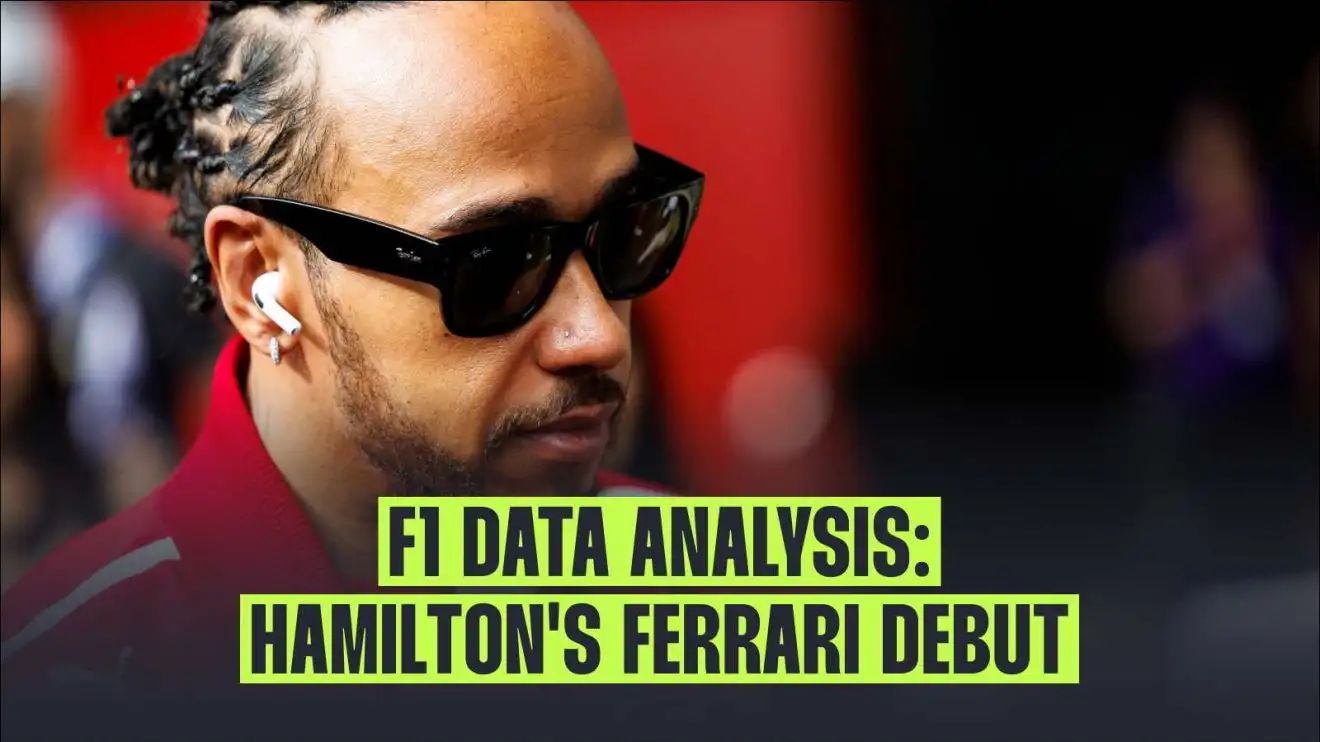
Lewis Hamilton’s highly anticipated debut with Ferrari at the Australian Grand Prix ended with a tenth-place finish.
While the seven-time world champion had a relatively uneventful race, a combination of strategic missteps, challenging track conditions, and some bad luck prevented him from securing a far better result.
How Hamilton’s First Ferrari Race Unfolded
Hamilton started the race from eighth place, maintaining his qualifying position off the line. Meanwhile, his teammate Charles Leclerc made an impressive start, overtaking Yuki Tsunoda and Alexander Albon to climb to fifth.
The race saw an early safety car deployment following incidents involving Jack Doohan and Carlos Sainz, but Hamilton’s race remained steady, if unspectacular, until lap 34.
For much of the race, Hamilton found himself stuck behind Albon and Tsunoda, unable to make significant progress.
In the tricky track conditions, he appeared focused on bringing the car home safely rather than taking unnecessary risks.
However, Ferrari’s strategy and race engineers struggled to capitalize on opportunities, leaving Hamilton unable to challenge for a higher position.
Missed Opportunities and Challenges
Despite the lack of on-track drama, Hamilton’s debut highlighted the potential for stronger performances in the future.
The difficult conditions and strategic challenges underscored the learning curve for both Hamilton and Ferrari as they adapt to their new partnership.
While the result may not have met expectations, the race provided valuable insights and experience for the team moving forward.
As Hamilton continues to settle into his new role with Ferrari, fans and analysts alike will be watching closely to see how the partnership evolves over the course of the season.
The Australian Grand Prix may not have been the dream start many hoped for, but it marks the beginning of a new chapter in Hamilton’s storied career.

However, a second safety car, prompted by Fernando Alonso’s crash, gave all drivers the chance to switch to slick tires without losing time.
Although more rain was forecasted, the intermediate tires were already heavily worn, making it extremely challenging to keep the cars on track. Alonso’s incident occurred while he was pushing hard to catch Pierre Gasly, highlighting the precarious conditions.
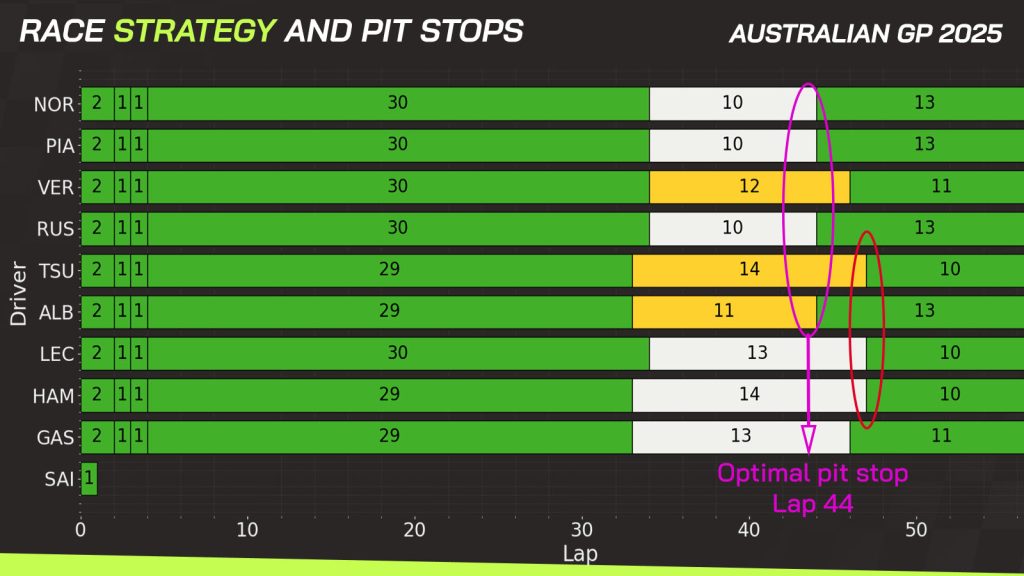
After switching to the hard tires, Hamilton struggled to make progress on the restart, remaining stuck behind Alexander Albon and Yuki Tsunoda.
However, the real turning point came when heavier rain arrived in Sector 3, creating chaos and presenting a missed opportunity for Ferrari and Hamilton.
The rain hit hardest in the final sector, where Lando Norris, Oscar Piastri, and Max Verstappen were battling for the lead. Piastri, under pressure from Verstappen for second place, made a costly mistake by running wide at Turn 11.
Attempting to recover, he went off again at Turn 13, ending up stuck in the grass.
The conditions in the final corners of the Albert Park circuit became extremely treacherous. However, deciding how to respond was far from straightforward, as the rain was localized and not expected to last long. This led to a mix of strategies across the grid.
Several drivers, including Norris, George Russell, Albon, Lance Stroll, Kimi Antonelli, Nico Hülkenberg, and Gabriel Bortoleto, opted to pit for intermediate tires.
This gamble paid off handsomely, as they gained significant positions. Bortoleto, however, made a mistake at Turn 12 and hit the wall, prompting another Safety Car deployment. Those who pitted on lap 44 reaped the rewards, securing valuable points.
Meanwhile, Verstappen, Tsunoda, Hamilton, Pierre Gasly, and Charles Leclerc stayed out on slick tires. Ferrari’s critical error was delaying Hamilton’s pit stop by two laps, causing him to lose positions unnecessarily, including to Gasly.
Had Ferrari made a well-timed stop, Hamilton could have challenged for fourth place, a position ultimately secured by his Mercedes replacement, Antonelli. In hindsight, Hamilton’s frustration is understandable, but the decision was far from easy.
Ferrari may have been aiming for a different strategy, hoping to capitalize on a potential red flag or a 1-2 finish if Hamilton had taken the lead.
Ultimately, the race highlighted the fine margins and tough calls that define Formula 1, leaving Hamilton and Ferrari to reflect on what might have been.
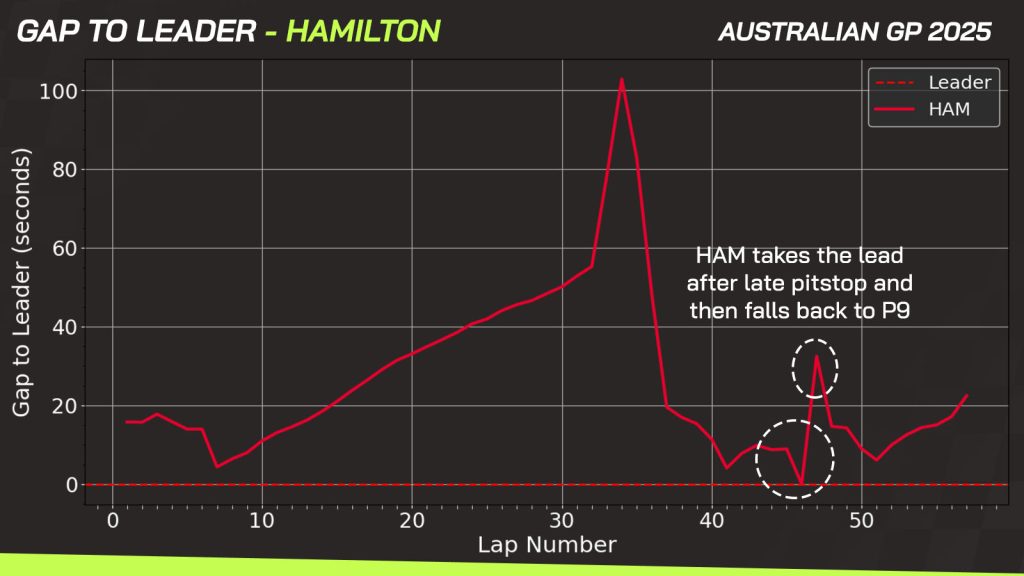
But it was that split-second decision a simple call to the pit box that made all the difference.
Instead of fighting for a podium spot against his former teammate George Russell, Hamilton found himself behind an Aston Martin and a Kick Sauber, teams that hadn’t been in contention until that moment.
This is the thrilling essence of Formula 1 strategy and the sport itself, where milliseconds and quick thinking can change everything.
After finally pitting for intermediate tires, Hamilton found himself in ninth place with just seven laps remaining, ahead of teammate Charles Leclerc.
Leclerc, who had spun earlier in the race, lost positions and ultimately fell behind Hamilton. While the result was far from ideal, it underscored the fine margins and high-stakes decisions that define Formula 1, leaving Hamilton and Ferrari to reflect on what could have been.
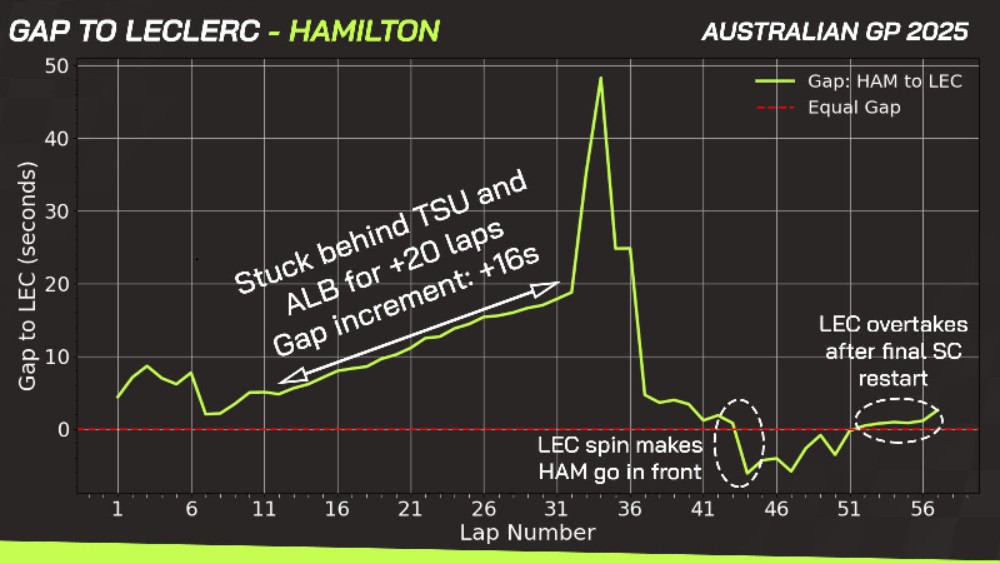
However, it didn’t take long for Charles Leclerc to reclaim his position. The Monegasque driver overtook Hamilton just one lap after the restart, dropping the British driver to 10th.
Both Hamilton and Leclerc managed to get past Pierre Gasly’s Alpine on lap 54, but the drama wasn’t over yet.
The final blow came from Oscar Piastri. The McLaren driver executed a bold and risky move on the outside of the fast Turn 9, making contact with Hamilton and damaging his front wing.
Piastri’s aggressive overtake pushed Hamilton back to 10th, where he ultimately finished.
It was a challenging race for Hamilton, who is still adapting to the SF-25. His cautious approach, avoiding unnecessary risks and overdriving, was evident throughout the race.
While he only scored one point, he managed to bring the car home safely on a difficult track where seasoned drivers like Fernando Alonso and Carlos Sainz ended up in the wall.
Hamilton will leave Melbourne with mixed feelings, reflecting on what might have been. Despite the tough debut, the race highlighted the potential for growth as he continues to settle into his new team and car.
FORMULA 1
Mark Hughes: Why McLaren’s thrashing Red Bull and Ferrari
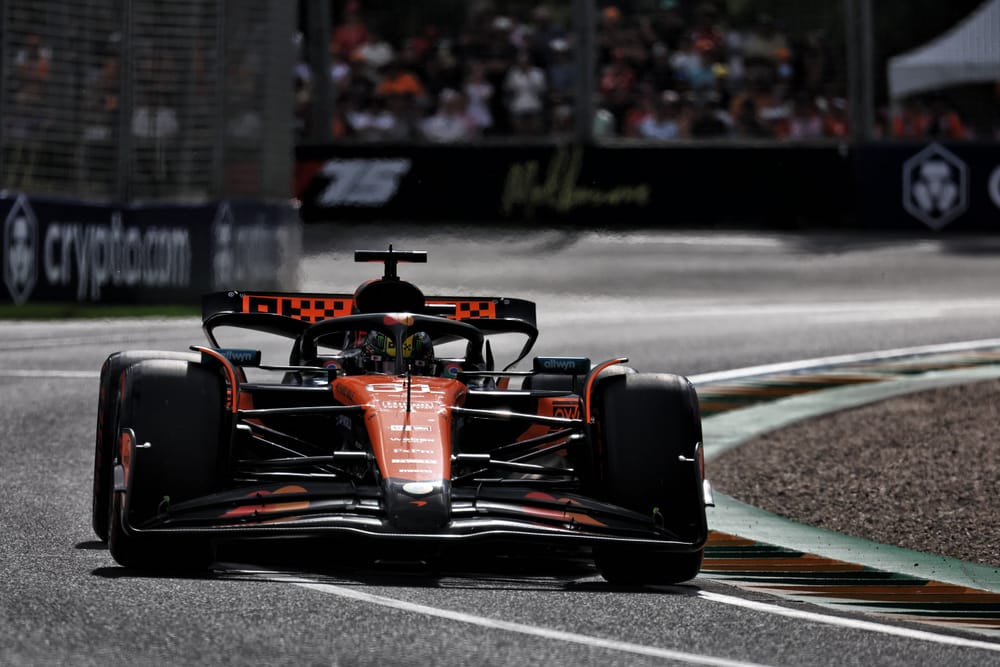
Lando Norris’s pole position at the Australian Grand Prix was 0.385 seconds faster than the closest non-McLaren car, reinforcing the fears of Red Bull and Ferrari heading into the weekend.
With Oscar Piastri securing P2, McLaren locked out the front row, setting up a dream scenario for the Australian driver at his home race especially with no team orders in play.
But while McLaren thrived at Albert Park, their rivals Max Verstappen and Charles Leclerc—struggled with overheating rear tires in the final sector, which ultimately highlighted McLaren’s key advantage.
McLaren’s Strength: Mastering the Soft Tires
The C5 soft compound has always been tricky at this circuit, particularly in high track temperatures exceeding 40°C.
The core of the tire isn’t strong enough to handle the high-speed middle sector and the demanding Turn 9-10 switchback that leads into the final sector.
Every team faced the challenge of managing tire temperatures keeping the front tires from cooling too much at the start of the lap while preventing the rear tires from overheating by the end.
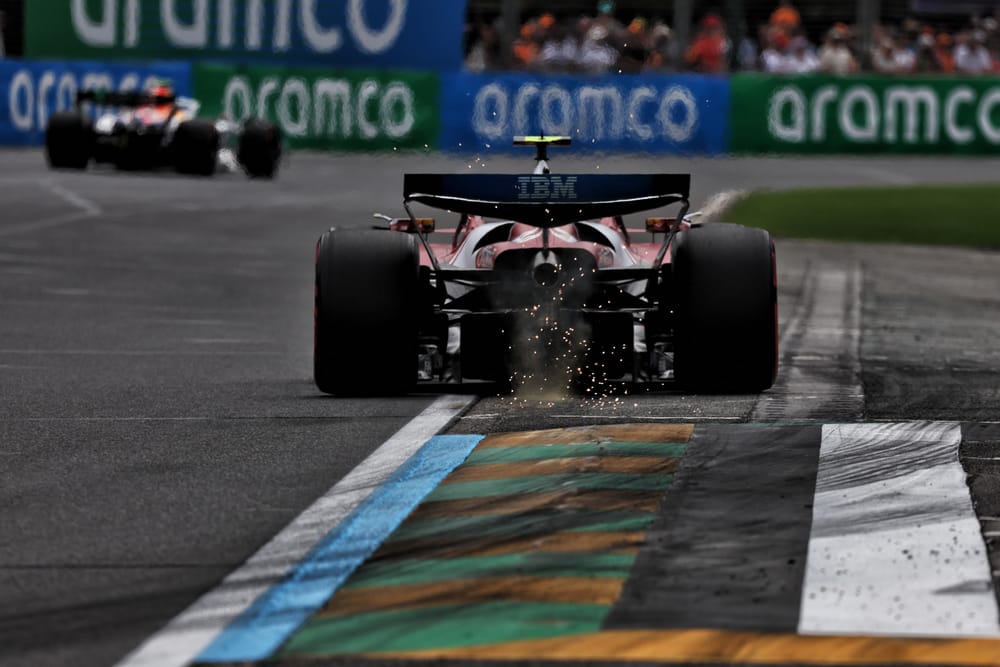
The difference? McLaren handled this issue better than anyone else.
While all teams suffered to some extent, McLaren minimized the problem, whereas Red Bull and Ferrari fell deep into it by the time they reached sector three.
At the Turn 11 right-hander, Verstappen was actually 0.266s ahead of Norris, and Leclerc was just 0.074s behind. But as they tackled the final few corners demanding strong rear traction their tires gave up.
By the end of the lap, Verstappen was 0.385s behind and Leclerc had fallen 0.659s off pole. Their challenge collapsed as they struggled for grip.
The McLaren Advantage: Smooth, Stable, and Fast
Observing the cars through the Turn 9-10 complex, it was clear the McLaren handled the bumps like a limousine, maintaining significantly more entry speed than its rivals. Meanwhile, the Ferrari, Red Bull, and Mercedes looked far more unstable.
Even McLaren wasn’t immune to the limits of the tires both Norris at Turn 4 and Piastri at Turn 11 had small moments on their first Q3 laps.
“As soon as you slide these tires at these temperatures, you lose a lot,” Piastri explained. “That’s how fine the line is around here. The car is quick, but it can bite if you push past the [ideal] tire temperature.”
Verstappen admitted that rear grip issues compromised his lap further. “The tires, we didn’t get on top of,” he said. “Even if we had, we didn’t have the pace for pole.”
Red Bull team principal Christian Horner echoed this, stating: “There was maybe another tenth in the car, but we were taking too much out of the tires in the first two sectors. The McLarens were brilliant on the tires.”
Red Bull’s Speed Returns, But at a Cost
Despite their struggles, Red Bull improved significantly from Friday when they were surprisingly slow on the straights.
With their power unit turned up, their usual DRS advantage seemed to be back.
Before the DRS zone on the kinking straight before Turn 9, both McLaren and Red Bull were level at 301 km/h. By the time they reached the braking zone for Turn 9, Red Bull had pulled 4 km/h ahead.
This extra speed helped Verstappen set the fastest middle sector time, proving that he was just as quick as the McLarens through Turn 9-10. However, that aggressive pace burned out his rear tires, leaving him vulnerable in the final sector.
Ferrari had a similar straight-line speed profile to McLaren, but neither Leclerc nor Hamilton could match the Red Bull/McLaren pace through Turn 9-10.
That alone was enough to push their rear tires over the limit by the final corners.
Sunday’s Race: Will the Rain Shake Things Up?
With heavy rain in the forecast for race day, the conditions will completely change the factors of competitiveness. Instead of rear tire overheating, the key battle will be about achieving a stable balance and keeping the front tires warm.
So far, McLaren’s smooth handling suggests it could remain strong in the wet, while Red Bull and Mercedes may struggle.
As for Ferrari? If their rear tires aren’t an issue, they could be a real threat.
But then again, Max Verstappen thrives in the rain…
-

 Football4 weeks ago
Football4 weeks agoArsenal prepare offer to deprive Real Madrid of ‘one of most promising players’ in the world
-
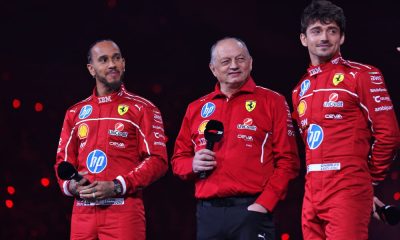
 FORMULA 11 week ago
FORMULA 11 week agoFerrari’s other big Mercedes signing – and how he’s helped Hamilton
-

 Football1 month ago
Football1 month agoRuben Amorim makes his intentions clear as Man Utd set to unleash beast vs Leicester
-

 FORMULA 11 week ago
FORMULA 11 week agoKimi Antonelli Stuns in Bahrain Testing, Raises Hopes for Mercedes Ahead of Australian Grand Prix
-

 Football1 month ago
Football1 month agoMikel Arteta Set to Overhaul Arsenal Squad in Summer Shake-Up
-

 Golf2 weeks ago
Golf2 weeks agoPGA Tour Releases Statement After Rules Confusion At Arnold Palmer Invitational
-

 Basketball1 month ago
Basketball1 month ago6 buyout candidates Warriors must pursue after 2025 NBA trade deadline
-
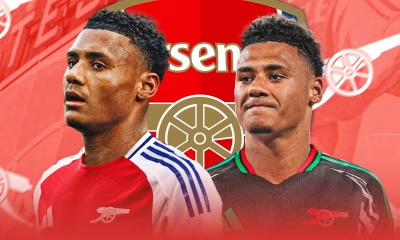
 Football2 months ago
Football2 months agoArsenal struck gold on “sensational” star worth millions more than Watkins



